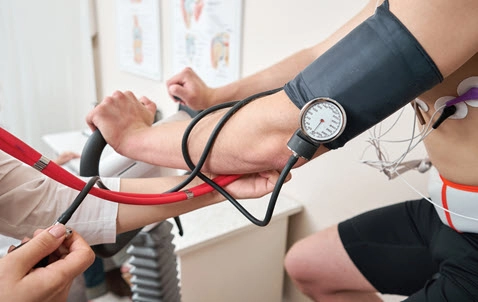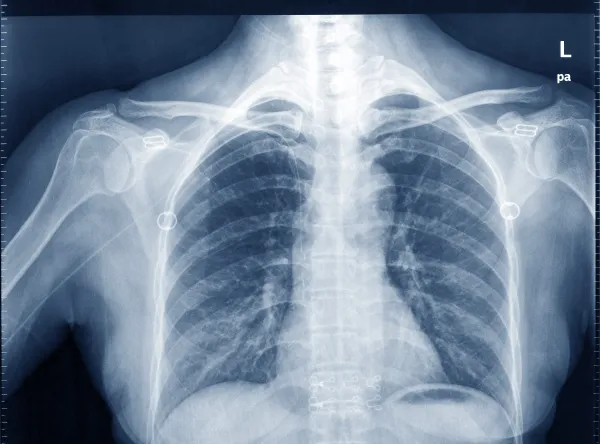Know When to Choose Between 94618 and 94621 for Pulmonary Exercise Tests
What services does CPET include? Find out. Pulmonologists may order exercise testing for their patients to determine the efficacy of treatment plans, test lung function, or further evaluate abnormal test results. However, not all exercise tests are the same, and understanding what each one entails can help you recognize which codes to assign. Read on to know how to properly code pulmonary exercise tests. Understand the Difference Between Pulmonary Exercise Testing CPT® Codes The AMA designated 94618 (Pulmonary stress testing (eg, 6-minute walk test), including measurement of heart rate, oximetry, and oxygen titration, when performed) and 94621 (Cardiopulmonary exercise testing, including measurements of minute ventilation, CO2 production, O2 uptake, and electrocardiographic recordings) in the CPT® code set to measure exercise tolerance and the cardiorespiratory response to exercise. To correctly report the testing, you should know the differences between the codes. Code 94618 is a low-complexity test that measures heart rate, blood pressure, and oxygen saturation level. “The parameters are recorded and documented prior to the start of exercise, which consists of walking 30 m (100 feet) for six minutes along a flat corridor. The parameters are monitored and recorded at different intervals during the walk with supplemental oxygen administered, if indicated,” says Carol Pohlig, BSN, RN, CPC, manager of coding and education in the department of medicine at the Hospital of the University of Pennsylvania in Philadelphia. Final measurements are also captured after the patient exercises. How does 94618 differ from an exercise test? CPT® code 94618 differs from 94617 (Exercise test for bronchospasm, including pre- and post-spirometry and pulse oximetry; with electrocardiographic recording(s)) and 94619 (Exercise test for bronchospasm, including pre- and post-spirometry and pulse oximetry; without electrocardiographic recording(s)) in that 94617 and 94619 are used to evaluate the patient for J45.990 (Exercise induced bronchospasm). The pulmonary stress testing reported with 94618 is used to diagnose specific lung disorders and evaluate lung function. On the other hand, 94621 requires more complex equipment, analyzes exhaled gas, and uses an electrocardiogram (ECG) to measure responses to stress. Providers use cardiopulmonary exercise testing (CPET) systems to evaluate how the patient’s heart, blood vessels, lungs, and muscles perform during exercise. CPET systems measure the following parameters at rest, during exercise, and during recovery: “The technical details of any test should be documented, uploaded, and stored into the electronic medical record (EMR), even if the data is hand-written — as it may be with 94618,” Pohlig says. Show Medical Necessity With Documentation Physicians will order simple or complex pulmonary stress tests for several reasons, and to ensure successful reimbursement for the testing, the provider’s documentation needs to show medical necessity. “Tests can be used for diagnostic purposes to assess signs of impaired lung function or to investigate abnormal test results,” Pohlig says. Typical symptoms that show medical necessity include: During an examination, the provider may also detect abnormal elements, such as decreased breath sounds, over inflation, cyanosis (bluish discoloration of the skin due to poor circulation or low oxygen levels in the blood), or chest deformity. These conditions may warrant the need for a stress test to evaluate the patient’s pulmonary function. Physicians may also see the need for a pulmonary stress test to explore the reasons behind the following conditions: Additionally, providers may order the studies to evaluate patients with known lung diseases as surveillance for disease progression or to measure the efficacy of treatment. “Any of these reasons should be documented in the medical record of the ordering physician, along with the supporting details that lend to the nature of the frequency of the test,” Pohlig says. Can You Report Spirometry Separately From 94621? Several procedures are bundled into 94621 (CPET), which means you can report a single code rather than sifting through the CPT® code set to find multiple codes. Is spirometry one of those procedures? Medicare’s National Correct Coding Initiative (NCCI) Procedure-to-Procedure (PTP) edit pairs prevent you from reporting 94010 (Spirometry, including graphic record, total and timed vital capacity, expiratory flow rate measurement(s), with or without maximal voluntary ventilation) or 94060 (Bronchodilation responsiveness, spirometry as in 94010, pre- and post-bronchodilator administration) with 94621 since spirometric measurements are part of the lung function captured at certain points of the study. However, “if the spirometry alerted the physician to an issue that warrants further CPET (and that testing was performed on the same date rather than being scheduled for a later date), you can use modifier 59 (Distinct procedural service) or one of the X{EPSU} modifiers to report spirometry to demonstrate the distinctiveness of the service,” Pohlig says. You may report spirometry in addition to pulmonary stress testing code 94618 without issue since the measurements collected during 94618 don’t overlap with 94010 or 94060.





